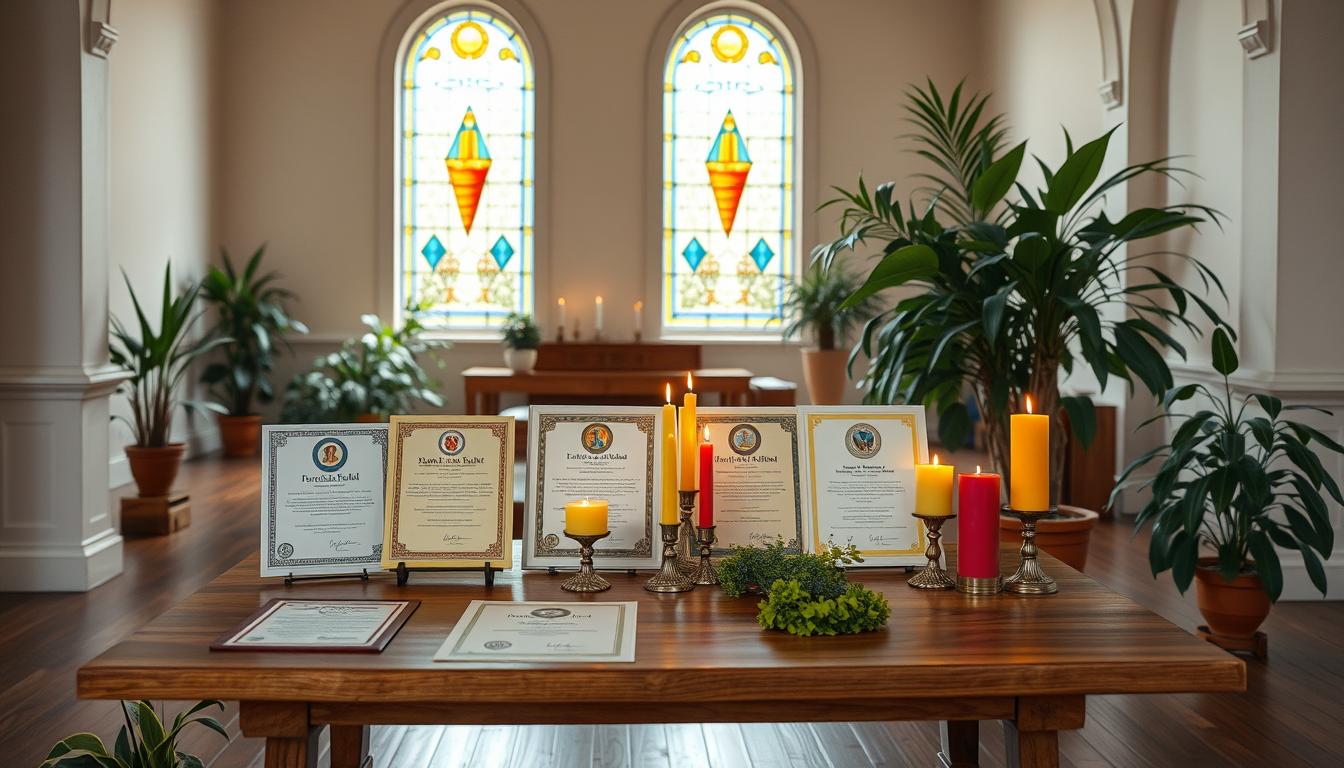At the intersection between the sacred and the technological, a new paradigm emerges that challenges the conventional boundaries of spirituality. The Digital Era, marked by exponential technological advances, redefines the way we experience the transcendental.
Adverts
In this article, we will explore how spirituality adapts and manifests itself in the digital landscape, questioning prejudices and offering innovative perspectives on the encounter between the divine and the virtual.
Rapid technological evolution throws us into a labyrinth where the spiritual and the digital intertwine in intriguing ways. The rise of artificial intelligence, virtual reality, and global interconnectivity challenges traditional conceptions of what is sacred.
However, this intersection is not just a challenge; It is an opportunity to rethink and expand our spiritual horizons.
The spiritual quest, often associated with solitary retreats or ancestral temples, now finds expression on online platforms, where geographic boundaries disappear. Transcendental meditation can be practiced virtually, connecting with spiritual masters from all over the world.
This spiritual globalization, fueled by technology, opens doors to a more holistic and interconnected understanding of the sacred.
However, this integration is not without challenges. Doubt about the authenticity of online spiritual experience persists, while the virtual can seem devoid of the sacredness associated with traditional physical spaces.
Reflection on how technology influences our perception of the sacred becomes essential, promoting a critical dialogue about the limits and possibilities of this fusion.
The Search for Connection Beyond the Screen
In a world where digital connectivity dominates, the crucial question arises: can we find spirituality beyond shiny screens? The search for connection transcends the virtual realm, leading many to explore spiritual practices that intertwine with technology.
Guided meditations, online retreats and virtual communities of spiritual discussion multiply, providing a space where the search for the transcendental finds expression in cyberspace.
As individuals seek deeper meaning, technology is not just a means, but becomes an enabler for the expansion of consciousness. Guided meditations through apps offer a spiritual journey accessible at any time, transcending geographical limitations.
Online retreats, often led by renowned spiritual leaders, provide immersive experiences that transcend the barrier of physical space, connecting people from different parts of the world in search of enlightenment.
Virtual spiritual discussion communities, in turn, create a global web of interaction, where people share experiences, doubts and spiritual discoveries.
These online forums not only connect like-minded individuals but also challenge the conventional notion that spirituality is restricted to specific physical spaces.
Technology, far from being a barrier, becomes a bridge that extends the horizons of spiritual quest beyond what was conceivable in past eras.
In this context, spirituality is not limited to temples, churches or mosques; it thrives in digital interactions, meditations streamed in real time, and in-depth conversations that transcend geographic boundaries.
The search for the transcendental, far from being eclipsed by digital presence, is enhanced and enriched by it, revealing technology's ability not only to connect devices, but to unite souls in search of something greater.
Redefining Spiritual Rituals
Digitization not only offers new ways of connecting, but also redefines traditional spiritual rituals.
The live broadcast of religious ceremonies, the creation of applications for meditative practices and virtual reality applied to religious experiences are examples of how technology permeates spiritual rituals.
This fusion of tradition and innovation challenges established concepts, providing a unique and personalized experience of spirituality.
Additionally, apps for meditative practices democratize access to spiritual guidance, allowing individuals around the world to personalize their journeys of self-discovery.
Technology, when integrated into spiritual rituals, not only preserves ancient traditions, but also revitalizes them, adapting them to the challenges and opportunities of the digital age. This symbiosis between the ancient and the modern highlights how technology is not only an enabler, but also a catalyst for the evolution of spirituality in the Digital Age.
Ethical Challenges of Spirituality in the Digital Age
With the increasing intertwining of spirituality and technology, it is imperative to analyze in more depth the ethical challenges that emerge in this innovative scenario. The commercialization of spiritual practices, for example, raises questions about the monetization of the sacred.
The use of algorithms to manipulate faith is another crucial concern as digital platforms seek to understand and influence individual beliefs, often for commercial purposes.
This specific aspect highlights the need for transparency and accountability on the part of organizations employing such algorithms. The invasion of privacy in spiritual contexts also figures as a significant ethical dilemma.
As individuals share their spiritual journeys online, concerns arise about how this information is collected, stored, and used.
Privacy protection becomes a priority, requiring robust policies and transparent practices to ensure the trust of the digital spiritual community. To address these ethical dilemmas, it is essential to foster an open and inclusive dialogue.
Ethical commissions, both within spiritual organizations and more broadly, can be established to evaluate and regulate ethical practices.
Furthermore, educating practitioners about digital risks and promoting a culture of responsibility online are crucial steps in seeking an ethical balance at the intersection of spirituality and technology.
By facing these challenges consciously, we can ensure that spirituality in the Digital Age develops ethically and respectfully, preserving the fundamental values that make the search for the transcendental meaningful.
Religious Diversity in Cyberspace
In this context, it is fascinating to observe how interfaith collaboration flourishes in the vastness of the internet. Social media platforms, discussion forums, and blogs dedicated to spirituality provide a stage for dialogue between followers of different religious traditions.
Through these virtual interactions, individuals can explore the similarities between their beliefs, promoting mutual understanding and dismantling entrenched stereotypes.
This collaboration transcends the simple recognition of diversity, evolving into an active celebration of the cultural and spiritual riches that each tradition offers.
Online events, such as interfaith webinars and virtual roundtables, provide a space for spiritual leaders to share wisdom and experiences, building bridges between faith, culture and spiritual practice.
The internet thus becomes a global meeting ground, where respect for religious diversity is fostered, and the exchange of ideas transcends geographical limits.
This digital interaction between religious traditions not only enriches individuals, but also contributes to building a more global and tolerant mindset, promoting peaceful coexistence in our increasingly connected society.

Conclusion: Spirituality and the Digital Age
At the intersection of spirituality and the Digital Age, it is imperative to recognize the dynamic and ever-evolving nature of this phenomenon. The significant transformation in the perception of the sacred reflects the continuous adaptation of spiritual practices to the demands and opportunities of cyberspace.
As we delve deeper into this new territory, we observe how the boundaries between the physical and the virtual become increasingly permeable, challenging traditional conceptions of sacred space.
The search for transcendental connection, previously anchored in temples and physical locations, now expands beyond these limits. The vast cyberspace transforms into a domain where spirituality knows no geographical boundaries, offering a fertile field for experimentation and exploration.
The contemporary individual, immersed in a digital world in constant movement, finds new ways to experience the sacred, whether through online meditations, virtual retreats or interactive spiritual communities.
In conclusion, spirituality in the Digital Age transcends the mere coexistence of tradition and innovation. It becomes a dynamic synthesis, shaping and being shaped by the constantly evolving digital world.
This article not only seeks to understand this phenomenon, but also instigates deep reflection on how spirituality and technology can not only coexist, but collaborate to offer a unique and meaningful journey to those seeking the transcendental in the 21st century.
By embracing continuous transformation, we can envision a future where spirituality and the Digital Age are not distinct entities, but integral parts of a holistic journey in search of meaning and connection.




